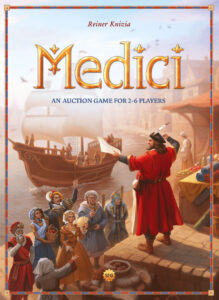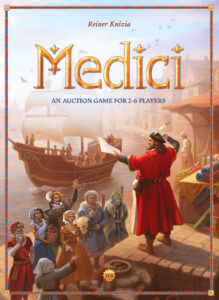 How to write a new review of an old game? Imagine telling Board Game Quest readers about a little game called (as it once was) The Settlers of Catan. Would you, dear reader, even get past this silly intro paragraph for an award winning game from 1995? Probably not. Well, what if I added that the game in question is probably by the most famous modern board game designer ever? Probably would make a new review seem even less necessary for a review, right? WRONG!
How to write a new review of an old game? Imagine telling Board Game Quest readers about a little game called (as it once was) The Settlers of Catan. Would you, dear reader, even get past this silly intro paragraph for an award winning game from 1995? Probably not. Well, what if I added that the game in question is probably by the most famous modern board game designer ever? Probably would make a new review seem even less necessary for a review, right? WRONG!
For all the fame of Dr. Reiner Knizia and for all the long heritage of the good doctor’s “Medici,” this game has often sailed just below the Kniziaradar. Hoping to remedy this, Steamforged Games, Ltd. has just re-re-re-released Medici—which was a Speil des Jahres “Recommended” game in the same year Catan took home the top honors—in an attractive new version that plays at the original 3-6 players but also includes rules for a 2-player duel, with new artwork from someone (or something?) named Rocketbrush.
This game is a classic part of the “Knizia Auction Trilogy” (bookended by Modern Art and Ra), and if you know it and have wanted to get a copy, you can skip to the bottom of this review because yes, you should jump on it. But if by chance you’ve missed out on this gem or even the entire genre of Knizian auction games, then let me walk you slowly down the path to becoming a Kniziologist.
Gameplay Overview:
As with seemingly every German game from the 1990s, you and your fellow players take on the role of Italian merchant-bankers engaged in early modern Mediterranean sea trading. Over the course of three “days” you will all bid to fill your ship with 5 items of cargo, and then receive rewards based on whose ship is filled with the most valuable set of goods overall, and then score points for who has managed to stockpile the most of each type of good in this and any previous rounds.
The twist that makes the game so delicious is that you are bidding for goods with money (florins, if we’re being technical, this is Renaissance Florence after all) but money (okay, fine, florins) also serves as the only source of victory points, converted on a 1-to-1 basis. This is a game mechanic that is so eloquently describes as “Victory Points as a Resource,” and it ensures that a great deal of the game’s tension and tradeoffs all come from how much to lose in order to win.
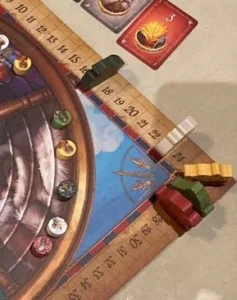
Each ship holds five goods and players take turns revealing one, two, or three cards and then run a single-bid auction for the full lot. Players cannot bid if the number of cards up for auction won’t fit into the remaining slots on their ship and once players fill their ships, they sit out of the auctions completely.
The round ends when either the cards run out (because no one bid on a lot of weak auction offerings) or when all but one player fills their ships, at which point the remaining player can take cards for free until the last ship is full or the cards run out.
Points (florins) are gained, the deck of goods cards is reshuffled, and the process repeats a second, and then a third time, and whoever has the most money at the end wins. Rules-wise, that’s pretty much all there is to it.
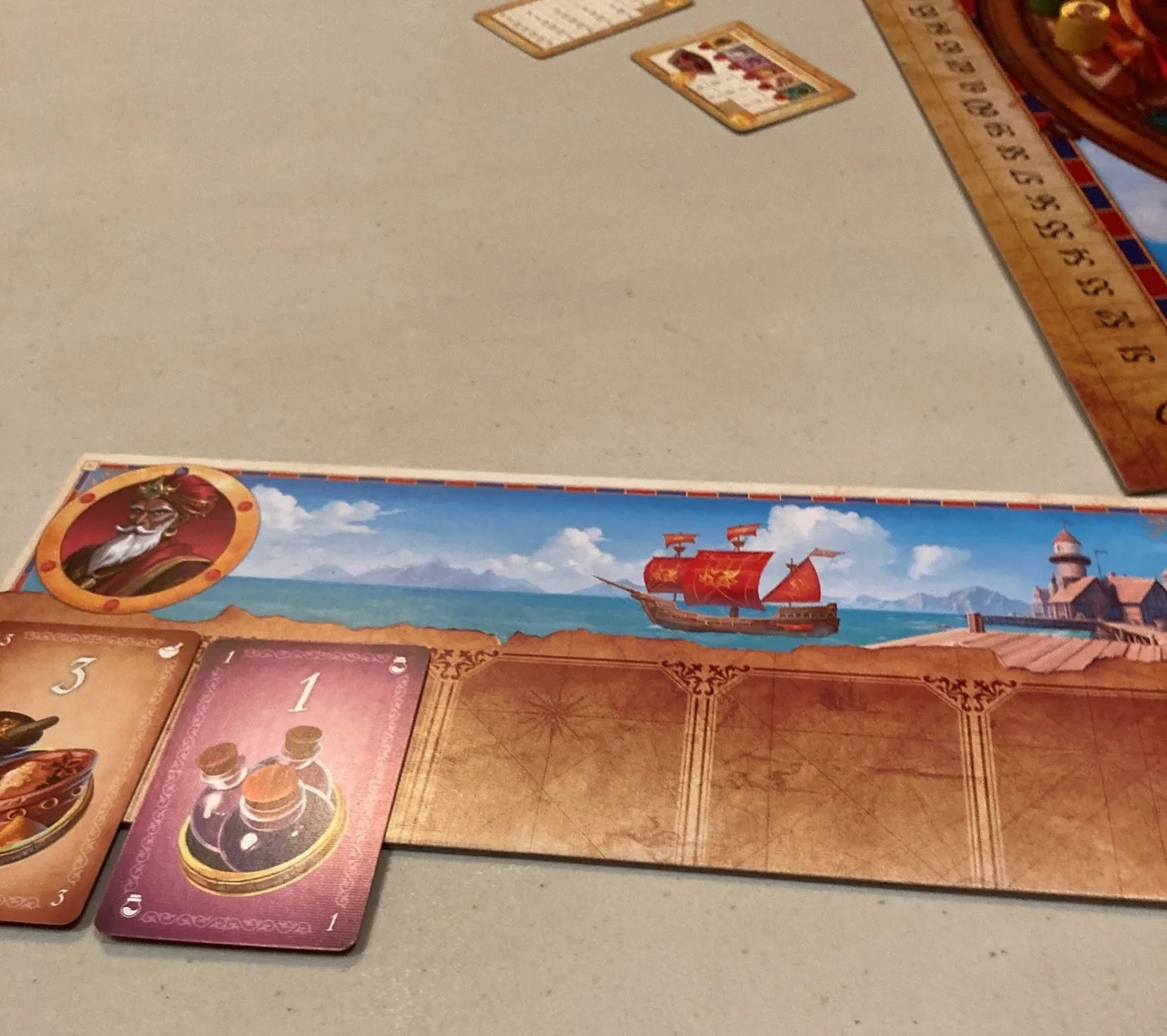
Game Experience:
As with many games by Dr. Knizia, the fun is quickly revealed the first time you mess up your bids. Maybe you grab what seems like a great set of 3 cards and then realize you can’t bid on any auctions with 3 cards for the rest of the round because your ship is down to 2 empty slots. So then maybe you grab a tasty twosome only to watch the other players get much better cards at much lower prices while you sit to the side unable to bid. So then next round you resolve not to bid too early, but then find that the deck runs out with you sitting with a couple of low-value spices and a whole lot of empty ship. Grrrr.
Eventually, though, you get the hang of it and realize the game is all about reading your opponents’ needs, assessing your own strengths, and then grabbing bargains while bidding up the cost of goods you know your opponents will have to outbid you for. Always paying the least is probably not the winning strategy, and always winning the auctions you want is maybe not either, depending on the price. Finding a happy medium, in an economy that varies from game to game based on the stinginess or wastefulness of your group’s bidding strategies, is a very fun balancing act.
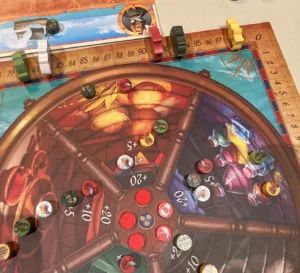
If you can count cards, even a little bit, you will be at an advantage in Medici, since knowing how many of the 5’s have already been bought is helpful. Beyond that, a degree in psychology might be more useful than a degree in economics, because the auction aspect of the game means that the “right” price to pay is always a function of what your tablemates feel about the cards. And as an economist, I can tell you that figuring out other people’s feelings is definitely not my profession’s core capability.
The game is great. Everything you could want from a mid-1990s Euro: light on rules, heavy on interpersonal interaction and strategy, and quick enough to play in well under an hour once people know the rules. The biggest drawback in the old days was the old ugly Euro effect, but that has been largely addressed by Steamforged Games’s new version, which comes with a colorful board, pleasant cards (with special icons to help folks who can’t always distinguish certain colors), and nice wooden pieces. It’s a very solid production, and it’s great the game is back in print.

Some might argue that the 2016 edition from Australian publisher Grail Games that featured art by Vincent Dutrait exceeds this newest UK-published version in terms of aesthetic appeal, but Steamforged’s current offering features nice art that stays out of the way of the game’s mechanics being the star, neither overshadowing the game itself, nor bringing it down.
I have just one quibble. Players are encouraged to use thematically appropriate wooden ships to track their money/points as the auctions proceed. But the ships are too big for the board when players end at the same level of florins, which is not uncommon. My group decided to use smaller tokens after our first play which solved the issue, but if the ships had just been designed with ties in mind, we wouldn’t have had to improvise at all. A tiny demerit, not enough to detract from my rating, but definitely a small strike against the design choices.
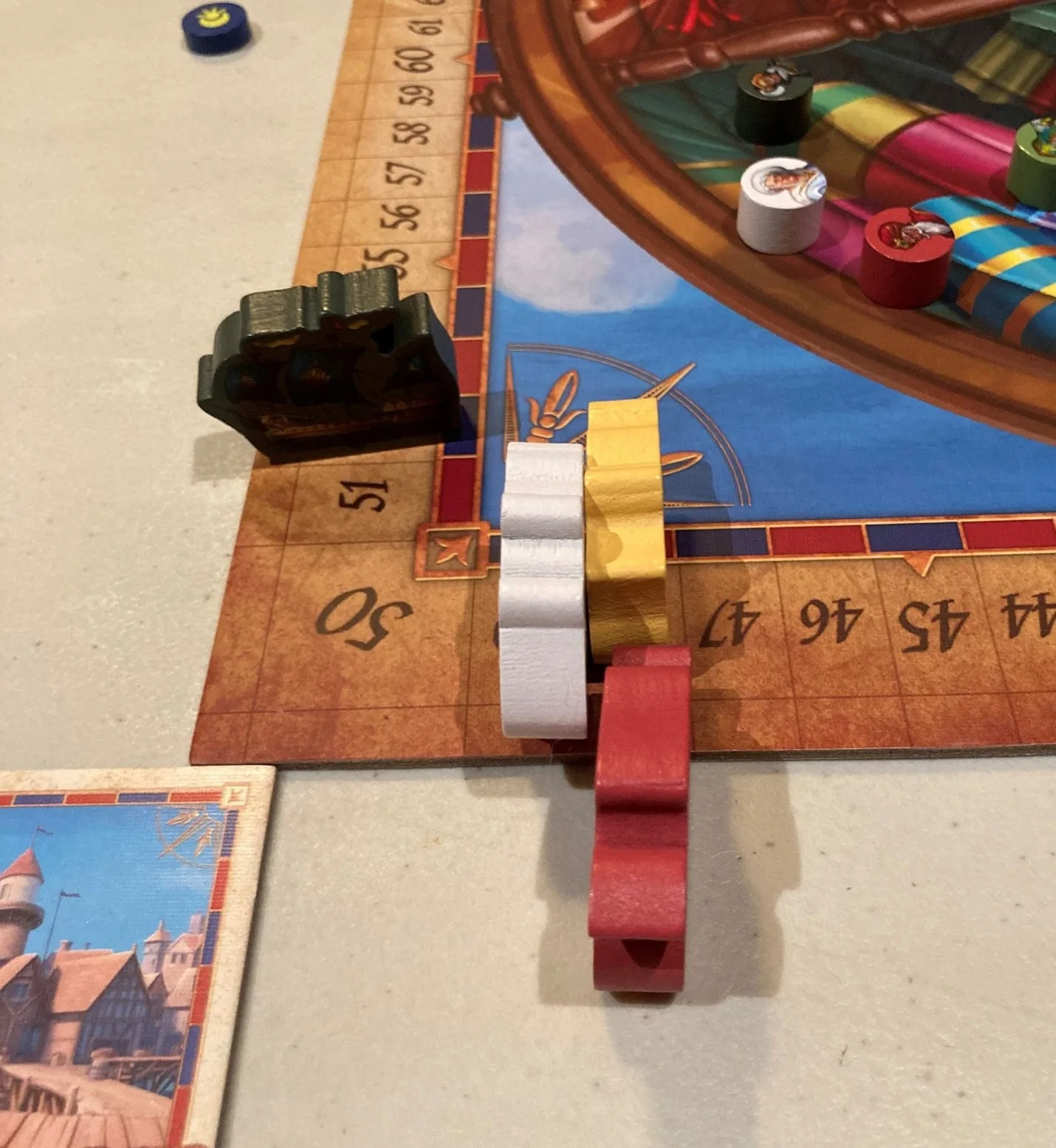
Final Thoughts:
If you like Medici and somehow don’t own a copy, grab this version and enjoy. If you like other Reiner Knizia games but somehow don’t know Medici, you will like it, grab this version and enjoy. If you’ve never played a Knizia before, you should definitely check out some of his great games, and any of his auction trilogy, including Medici, would make a great entry point into the good doctor’s oeuvre.
On the other hand, if you found Ra or Modern Art to be lacking, Medici won’t change your mind, because it is part of Knizia’s exploration of the auction space and definitely of a piece with his other similar games. So I would strongly recommend this game to everyone, except those who (a) own an older copy or (b) don’t like Reiner Knizia’s style of games. The rest of you should buy a copy and feel free to thank me in advance for the recommendation.
Final Score: 5 Stars – It was a 5 in 1995, and it has held up well. If you aren’t ancient like me and games from 1995 are still unexplored, you owe it to yourself and your game group to try this one out.
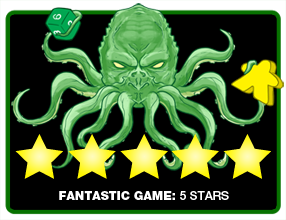 Hits:
Hits:
• Light rules that can be taught in minutes
• Highly interactive play that hinges more on your opponent’s psychology than mathing out a perfect formula
• Plays quickly and can either be the main course (perhaps played twice) or a lovely appetizer to a night of heavier gaming.
Misses:
• You have to like auction games
• The scoring ships are too large to track ties easily
Source: Board Game Quest



